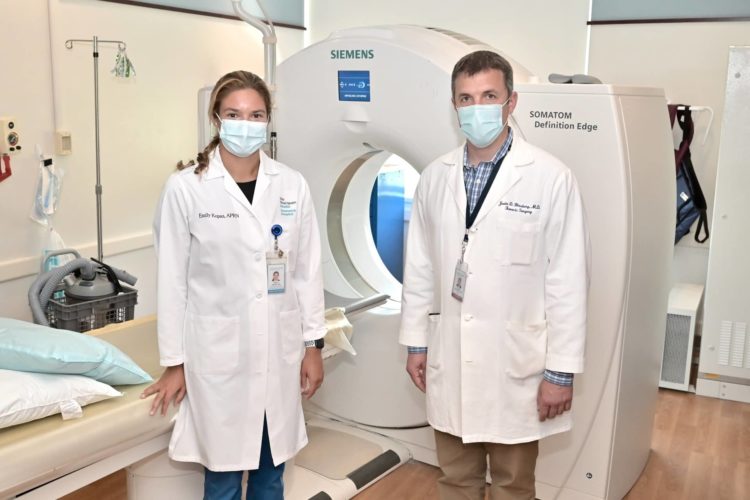
Greenwich Hospital cancer experts hope newly released American Cancer Society (ACS) lung screening guidelines will prompt more individuals to take advantage of the hospital’s Early Detection Lung Screening Program and reduce the number of people who die from the disease each year.
Released at the start of Lung Cancer Awareness Month, the ACS guidelines recommend annual screening for those ages 50 to 80 who smoke or formerly smoked and have a 20-year or greater “pack-year” history. A pack-year equates to smoking one pack or about 20 cigarettes per day for a year. Health experts say the broader guidelines mean millions more individuals are eligible.
In the past, Emily Kopas, APRN, coordinator of the Lung Cancer Screening Program at the Smilow Cancer Hospital in Greenwich, has noted that only an estimated five percent of those eligible nationwide get screened. The innovative screening uses low-dose CT scans that can significantly increase five-year survival rates. Screening takes no more than 15 seconds.
Although non-smokers can be diagnosed with lung cancer, screening is extremely important in high-risk patients with a smoking history. Screening can save lives by identifying lung cancer when it is easier to treat and cure. Surgical advances allow for minimally invasive techniques and short hospital stays. The five-year cure rates for early lung cancer is 85 percent.
The Lung Cancer Alliance has recognized Greenwich Hospital’s Early Detection Lung Screening Program as a Screening Center for Excellence adhering to best practice guidelines. One of only a handful of centers in Connecticut earning this distinction, Screening Centers of Excellence adhere to comprehensive guidelines for lung screening based upon evidence-based medicine while providing patients with access to the highest quality of care.
Lung cancer is the second most common cancer in men and women in the United States, accounting for 1 in 5 of all cancer deaths, according to the American Cancer Society. More than 238,000 new cases of lung cancer are projected this year, with nearly 130,000 deaths, making it the leading cause of cancer death in the US. Each year, more people die of lung cancer than of colon, breast and prostate cancers combined. However, thanks to fewer people smoking and advances in early detection and treatment, the number of deaths from lung cancer is dropping.




